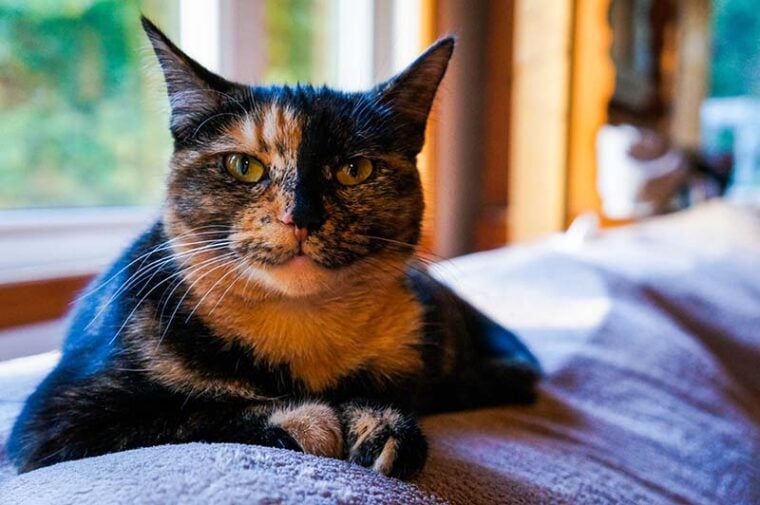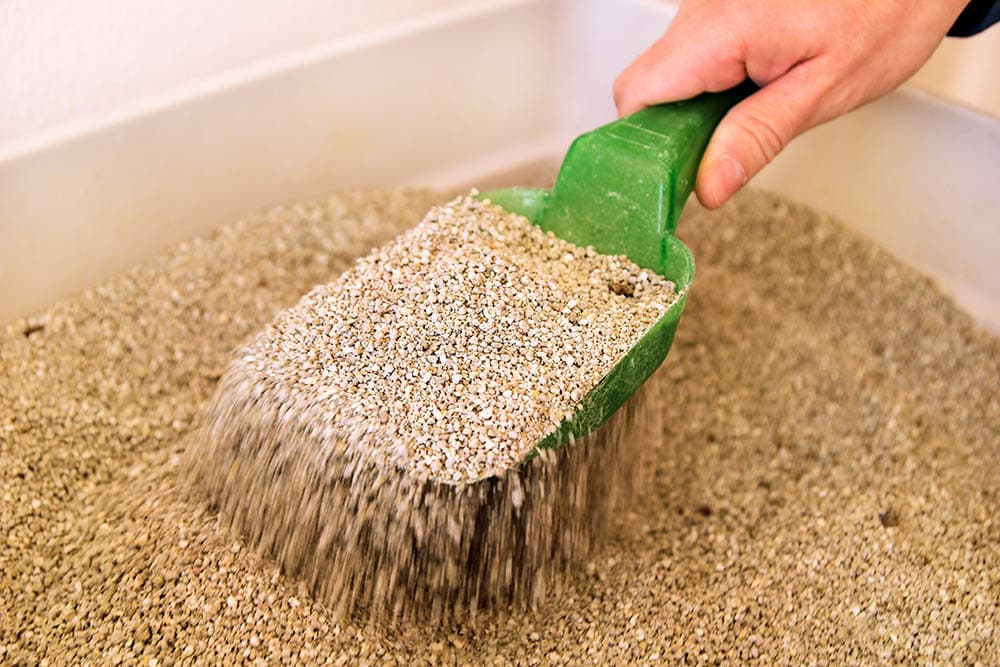
Caring for any cat is always a wonderfully rewarding experience. Caring for a Tortoiseshell cat is no different, and they don’t need any additional care that you wouldn’t give a cat of another color. However, they are sometimes known to be feisty, and a few special tips can help Tortie owners regarding their care. We’ve collated 10 Tortoiseshell cat care tips for owners (or would-be owners) to explore.
The 10 Tips to Care for a Tortoiseshell Cat
1. Fresh Water Is Essential Every Day

All cats need fresh water daily to survive and thrive. However, cats can be picky with what they drink out of! Tortoiseshell cats, in particular, are known for being opinionated and knowing what they want; providing different water sources scattered around your home can help them get enough water and stay hydrated.
Some cats like still water, while others prefer running water. A faucet for running water is usually a great option for cats, but not for us! Instead, try a cat water fountain to tempt picky cats to drink.
2. Age-Appropriate Food
Your Tortoiseshell cat will need a diet appropriate for their life stage to provide them with all the nutrition they need to thrive. Tortoiseshell kittens will need high-calorie kitten food to give them the energy they need to grow, and a kitten’s body and brain need protein and calcium to build healthy muscle and bone.
Adult Torties will need a diet that helps them maintain a healthy weight, so it’ll be lower in calories than kitten food but still highly nutritious. Elderly cats often slow down and can have problems with their joints and mobility, so a diet rich in fatty acids can protect their joints and keep them moving in their old age.
3. Get Some Toys

Your Tortoiseshell will need enrichment to keep them from getting bored. Cats need just as much playtime as dogs; providing your Tortie with fun and interesting toys will prevent boredom and allow them to display natural behaviors. For example, hunting, stalking, chasing, and pouncing are all natural behaviors cats perform in the wild.
They need the chance to do this indoors to keep them happy and healthy. If your Tortoiseshell cat doesn’t have enough interesting toys that they like to play with, they might start exhibiting less desirable behavior.
4. Grooming Is Key
Grooming is an important part of care for all cats, Tortoiseshell cats included. The grooming needed will depend on your cat’s breed or the length of its hair. Short-haired Torties will only need a weekly brushing session to keep their skin and coat in good health, but long-furred cats will need daily brushing to prevent painful matting and knotting of the fur.
Getting your cat used to grooming at a young age is key, as well as introducing nail clipping and tooth brushing. If a Tortie kitten is introduced to these grooming activities early, it’ll make it a lot easier for you to continue them into the future!
5. Keep Up Litterbox Maintenance

A dirty litterbox is a litterbox no cat will want to use. Cats are very clean by nature and will not want to go into a soiled place, so forcing your Tortie to use a dirty litterbox will likely mean that they won’t use it at all.
Not only is a dirty litterbox inviting your cat to go elsewhere in the home, but it can also facilitate the spread of disease and make you and your cat sick. On the other hand, a clean litterbox is a happy litterbox, so scoop it daily and do a deep clean of the box every week.
6. Vaccinations Are Very Important
Tortoiseshell kittens should get their primary course of vaccinations by the time they’re 8 weeks old and ready to go to their new homes. Some owners might have to get the second shot with their new kitten after they’ve arrived, but the important point is that kittens get vaccinated to prevent diseases that can easily become fatal. In the US, cats are vaccinated against the following:
The rabies vaccine usually comes when cats are a little older, and each year many cats will get boosters of some of these vaccines depending on what their vet recommends. Unfortunately, Tortoiseshell cats and kittens can die if they contract these diseases, so vaccinating your Tortie against them is an important part of their care.
7. Give Them Places to Scratch
Scratching is another innate (natural) behavior cats must express to be happy and healthy. Cats will scratch; there’s no getting away from it. We, as owners, need to provide them with a proper place to do so. Some Torties prefer tall, standing cat trees to scratch on; others will choose to scratch on cardboard scratchers horizontally. The key is to give your Tortoiseshell a choice about what they scratch on and where to prevent them from giving in to natural urges and scratching your new couch!
De-clawing should be mentioned here; it’s cruel to de-claw a cat, and no cat should ever undergo the procedure. If your Tortoiseshell’s scratching is becoming a problem, seek advice from your veterinarian.
8. Keep Their Space Calm
Because Tortoiseshell cats can sometimes be highly strung (as some owners believe!), keeping a calm, cozy space in the home for them to relax in can keep stress levels to a minimum. Setting up a room in a dark, quiet area can be made even more reassuring by adding hidey-holes and soft, warm areas for your Tortie to sleep in.
Make use of the vertical space by putting up shelves for your cat to climb up to, as many cats feel safer when up high. Pheromone diffusers are also a great way to keep your Tortie calm, as they give off a “happy cat” scent which can help them feel secure.
9. Provide Parasite Treatment

The last thing any Tortoiseshell cat (or their owners) want is uninvited guests in the form of fleas or ticks hitching a ride into the home. Besides being annoying and itchy, many cats suffer from allergies to flea saliva. This can cause painful and intensely itchy bites and rashes along the skin.
These can, in turn, lead to fur loss and open wounds from intense scratching and overgrooming. Your cat should also be given a deworming tablet to prevent gastrointestinal worm infections from taking hold. A monthly parasite treatment prescribed by your vet should be given to your cat to protect them from parasites and your home from invasion too!
10. Spay and Microchip Your Tortie
Lastly, spaying and microchipping your Tortoiseshell cat is very important. Cats reach sexual maturity at around 4 months of age, and they don’t have a reproductive cycle that’s reliably timed.
Instead, cats go into “heat” in the warmer months but can also be affected by different factors. So, get your Tortie fixed around this age instead of dealing with unwanted litters or behavior. They should also be microchipped at this time, as many more lost cats are reunited with their owners if they’re microchipped.
Conclusion
Tortoiseshell cats are charismatic and bold, but they’re still just cats like any other. They need the same care and attention as all other cat colors do (despite their tell-tale grumpiness); by making sure you give your cat the best care possible, you can keep them happy and healthy for as long as possible. Your Tortoiseshell will thank you for it and bless you with love and companionship for many years.
- You might also like: Dilute Tortoiseshell Cat: Pictures, Facts & History
Featured Image Credit: David Boutin, Shutterstock





